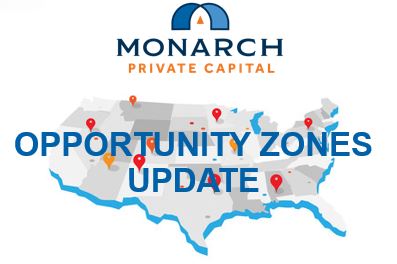Treasury Releases Second Set of Highly Anticipated Opportunity Zone Guidance
 The U.S. Department of the Treasury issued its second set of proposed regulations related to the new Opportunity Zones (OZ) tax incentive.
The U.S. Department of the Treasury issued its second set of proposed regulations related to the new Opportunity Zones (OZ) tax incentive.
The guidance makes it easier for funds to ensure compliance with the requirement that a fund has 90 percent of its assets invested in OZs and expands the working capital safe harbors. The proposed regulations also provide clarity on treatment of gains on long-term investments, ownership and operation of the business, and what constitutes Qualified OZ Business Property. For the full guidance click here.
Below are the highlights:
- if anyone invests… the money has one year to be reinvested
- definition as to what can be done with distributions
- Money has gone from being on the sidelines to being committed.
“We are pleased to issue guidance that provides greater flexibility for communities and investors as we continue to encourage investment and development in Opportunity Zones,” said Secretary Steven T. Mnuchin. “This incentive will foster economic revitalization, create jobs and spur economic growth that will move these communities forward and create a brighter future.”
Related Posts

Monarch Private Capital Joins SEIA’s Board of Directors
Mar 17, 2022
Monarch Private Capital, a nationally recognized ESG investment firm that develops, finances and manages a diversified portfolio of projects that generate both federal and state tax credits, is pleased to […]

Monarch Private Capital and WEDI Partner to Support a New Home for West Side Bazaar
Jul 19, 2022
Buffalo’s West Side Bazaar, a program of the Westminster Economic Development Initiative (WEDI), secured Historic and New Markets Tax Credit equity from Monarch Private Capital with which to invest in […]

ESG Investing: Where it is Now; Where it’s Headed; What to Do
Jun 13, 2022
Published by Michael Novogradac on Wednesday, June 1, 2022 The expanding awareness and interest in ESG–environmental, social and governance–investing could lead to a seismic increase in investor demand for community development tax incentives, […]